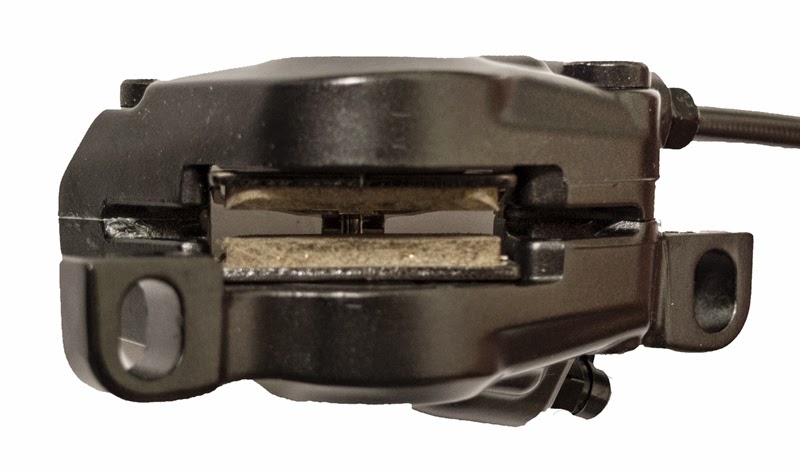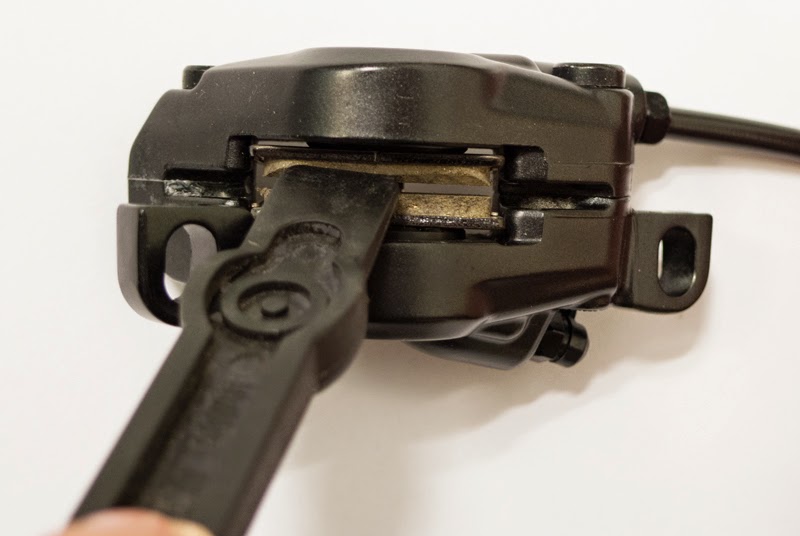Disc brakes on road bikes. I haven't seen a technical innovation that's caused as much controversy since - well, since Shimano invented a little thing called Di2. Sure, there's a lot of hand-wringing about their place in the professional peloton, but in terms of the rest of us riding around, are they worth the extra expense?
 As a staff member at one of Sydney's biggest bike shops, I've been
building, riding and servicing road bikes with disc brakes on a daily
basis for the past two years, and on mountain bikes for a lot longer.
I've also talked to many other mechanics who work on them on a daily
basis.
As a staff member at one of Sydney's biggest bike shops, I've been
building, riding and servicing road bikes with disc brakes on a daily
basis for the past two years, and on mountain bikes for a lot longer.
I've also talked to many other mechanics who work on them on a daily
basis.Here's a no-nonsense look at the pros and cons of road disc brakes, and whether you need them
on your bike.
They work better than caliper brakes in almost every way
From a functional perspective, the marketing hype is all true. Road discs, when they're properly adjusted, are the mutt's nuts when it comes to every aspect of braking.
It's not just about getting more stopping power under you, however. Discs don't actually give you that much more stopping power than a decent caliper brake. However, the difference is all at the lever. You've got much more control over the amount of braking force you use, and it requires very little power from your fingers to apply that force. Plus, it feels buttery, buttery smooth - no cable friction here - and you get very similar performance whether you're riding in the wet or the dry.
Let me say that again, because it's the most important point: braking in the wet is significantly better.Sure, you can still skid out or lock up just as easily, and the amount of grip from your tyres is critical, but disc brakes make much more sense in the wet.
Maintenance
Of course, all of the above depends on those brakes being properly adjusted and in flawless working order. The generation of brakes that are specced on 2015 and 2016 model year bikes are practically issue-free.
From a workshop point of view, road hydraulics need very little maintenance, aside from an occasional bleed and pad replacement. There are a couple of quirks.
First, some riders have complained about their pads constantly rubbing on the rotors. Almost down to a man, this is because of the quick release lever not being done up tight enough and not holding the rotor in place securely enough.This will become less of an issue as we see more road bikes equipped with the through-axles rather than quick-release skewers.
To prevent this, you need to do up the quick-release skewers a fair bit tighter than you may be used to. This is all well and good for us mechanics, with our fingers constructed of sprung steel, but this can be challenging for mere mortals. All I can say is, get working on your finger exercises.
Complaint number two is squealing brakes. This is a fact of life with disc brakes, and every mountain biker for the past 20 years has learned to love the siren song of the rotor. The chief culprit for this is dirty and/or contaminated pads. The only way to prevent this is to clean your brakes. Get some disc brake cleaner, get a clean rag - and I mean clean, not covered in chain lube or yesterday's lunch - and wipe over your rotors when you get home from a ride, especially if it's a wet one. You will save a lot of money on pads in the long run.
Here are some more useful maintenance tips for road discs.
Racing wheels
Here's the elephant in the room. So, discs might be getting trialed by eight professional teams this year, but unless you're slipping the commissaire fifty bucks every time you race, you cannot, should not and will not be allowed to race on a disc-equipped road bike for at least another 15 months.
So, if you enjoy lining up at the local crit or road race on a Sunday morning, you'd better resign yourself to the fact you won't be doing it on your shiny new road disc bike. Either that, or take up cyclo-cross.
From a functionality and maintenance point of view, disc brakes are a huge leap forward from the caliper brakes we're used to on road bikes. Seriously, the difference when riding is like the difference between alloy and carbon frames, or between mechanical and electronic gear shifting. It's hard to go back to calipers once you've got used to the control that discs give you, especially in wet conditions.
However, it depends on you and the kind of riding you do as to whether you should rush out and buy one today. If you're looking for a bike for the morning bunchie, to ride in gran fondos and to commute on, you absolutely should consider it as an option. However, if you're a weight-weenie racer or like to keep your options open on wheel choice, then perhaps hold off for a couple more years.
When
the brake pads are replaced or if accidentally the brake lever is
pressed without a rotor or spacer between the pads, you will have to
reset the brake calliper pistons. Basically resetting your b - See more
at:
http://blog.rahoxbrakes.com/2014/10/how-to-reset-mountain-bike-disc-brakes.html#sthash.SeQ3oy2M.dpuf
When
the brake pads are replaced or if accidentally the brake lever is
pressed without a rotor or spacer between the pads, you will have to
reset the brake calliper pistons. Basically resetting your b - See more
at:
http://blog.rahoxbrakes.com/2014/10/how-to-reset-mountain-bike-disc-brakes.html#sthash.SeQ3oy2M.dpuf
How to reset mountain bike disc brakes - calliper pistons
 |
| Shimano M615 brake calliper with fully retracted pads as it comes from the factory |
- If you are going to change or upgrade your mountain bike brake pads
the easiest way to reset your pistons is without removing the worn
brake pads. Remove the wheel and just put a large flat blade screwdriver
between the pads and twist pushing the pads apart until the calliper
pistons are retracted to its original position. You will get enough room
to clear the new brake pads and the brake rotor.

Push the pads apart until they are fully retracted to the original position
If you want to use this method but you don’t need replacing the brake pads and want to avoid scratching your current brake pads, you can use any other softer tool (tire lever for example), or just wrap the screwdriver blade in electrical tape and follow the same twisting procedure. If the brake pistons don’t move back enough to clear the brake rotor, or there are very hard to retract is often because there is too much brake fluid in the system causing the lock. In this case you will have to remove any excess brake fluid from the system, unscrewing a bit the top bleeder at the master cylinder or removing the fluid reservoir top cap. Always try first with the top bleeder or reservoir top cap to avoid air entering the system. Catch the excess brake fluid with some paper towel and be careful and cover your brake pads to avoid brake fluid splash ruining them. Tighten the bleeder or reinstall the reservoir top cap and you are done. - If
you have removed the brake pads, you can retract the calliper pistons
with a tire brake lever or similar “soft” tool to avoid scratching the
surface of your calliper pistons. Press both pistons until they are
fully retracted into the calliper body.
- Now install the new pads, the wheel and “set” the brake pistons to the correct position by pressing the brake lever hard 2-3 times. After this setting you should have full power, but if you have removed some fluid from the brake system and feel your brake spongy, you should bleed your brake system following the Service Instructions of your brake system manufacturer. Search the links below for detailed information from the main mountain bike brake manufacturers.
No comments:
Post a Comment